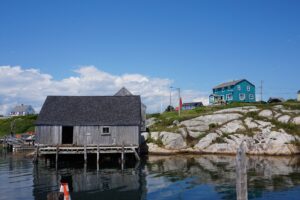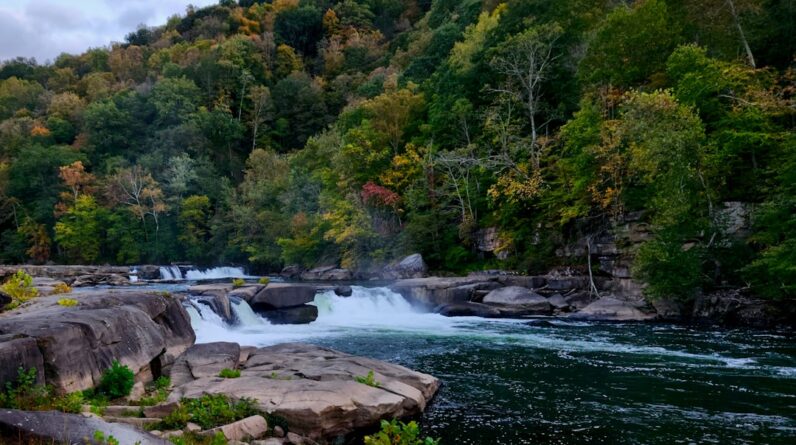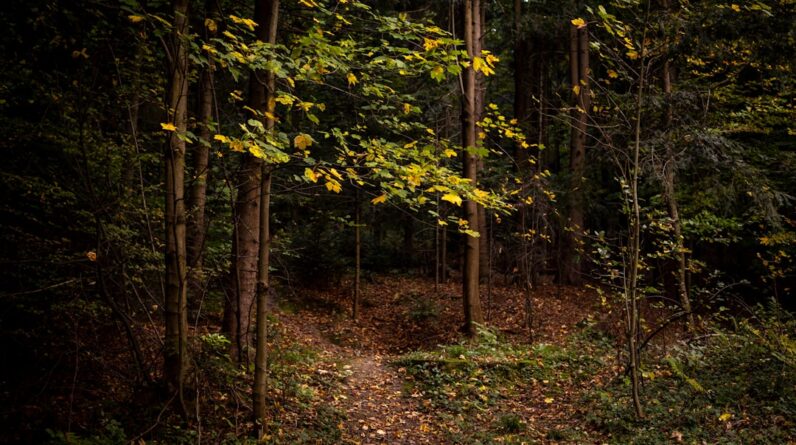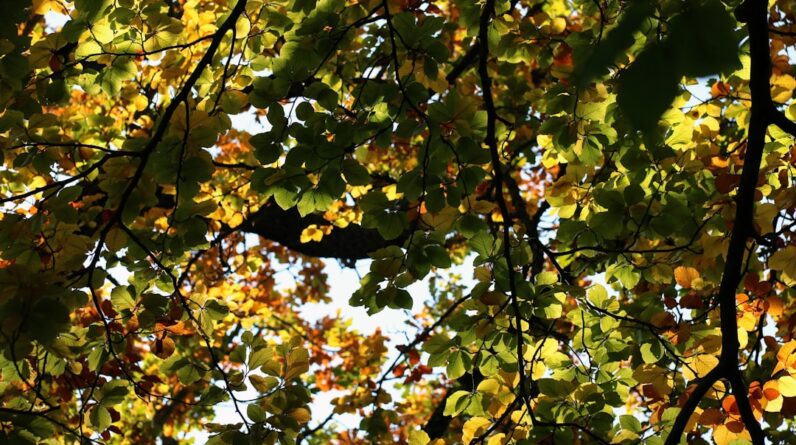
Nova Scotia, located on Canada’s eastern coast, is home to a diverse and stunning wilderness. From rugged coastlines to lush forests, this province offers a wide range of outdoor adventures for nature enthusiasts. The wilderness areas in Nova Scotia are not only beautiful but also play a crucial role in preserving biodiversity and providing habitat for various species. It is essential to protect and preserve these areas for future generations to enjoy.
Key Takeaways
- Nova Scotia’s wilderness offers a diverse range of outdoor activities for nature enthusiasts.
- Coastal paddling routes provide stunning views of the rugged coastline and opportunities to spot wildlife.
- Hiking trails in Nova Scotia’s wilderness offer varying levels of difficulty and showcase the province’s natural beauty.
- Camping in the backcountry allows for a true wilderness experience and the chance to disconnect from technology.
- Wildlife encounters in Nova Scotia’s wilderness are common and visitors should always practice safe and respectful viewing habits.
Exploring the Coastal Paddling Routes
One of the best ways to experience Nova Scotia’s wilderness is through coastal paddling routes. The province boasts an extensive coastline, dotted with picturesque coves, islands, and beaches. Popular paddling routes include the Eastern Shore Islands, Bras d’Or Lake, and the Bay of Fundy.
When planning a paddling trip, it is important to consider factors such as tides, weather conditions, and navigation. It is advisable to check local regulations and obtain any necessary permits before embarking on your journey. Additionally, ensure you have the appropriate gear, including a kayak or canoe, life jacket, navigation tools, and safety equipment.
As you paddle along the coast, you will be treated to breathtaking scenery and abundant wildlife. Keep an eye out for seals, dolphins, and various bird species that call these coastal waters home. The rugged cliffs and pristine beaches provide a stunning backdrop for your adventure.
Hiking Trails in Nova Scotia’s Wilderness
For those who prefer exploring on foot, Nova Scotia offers a plethora of hiking trails that showcase the province’s natural beauty. From easy strolls to challenging treks, there is something for every level of hiker.
Some of the best hiking trails in Nova Scotia include Cape Chignecto Provincial Park, Cape Breton Highlands National Park, and Kejimkujik National Park. These trails offer a range of difficulty levels and provide opportunities to immerse yourself in the wilderness.
Before setting out on a hike, it is important to assess your fitness level and choose a trail that suits your abilities. It is also crucial to pack appropriate gear, including sturdy hiking boots, a backpack with essentials such as water and snacks, and clothing suitable for the weather conditions.
Along the hiking trails, you will encounter stunning vistas, cascading waterfalls, and unique rock formations. Keep an eye out for wildlife such as moose, black bears, and various bird species. These trails offer a chance to connect with nature and experience the tranquility of Nova Scotia’s wilderness.
Camping in the Backcountry
For those seeking a more immersive wilderness experience, backcountry camping is an excellent option. Nova Scotia offers several designated backcountry camping areas where you can pitch your tent and spend the night under the stars.
Before embarking on a backcountry camping trip, it is important to familiarize yourself with the regulations and obtain any necessary permits. These regulations are in place to protect the environment and ensure a sustainable camping experience for all visitors.
Recommended backcountry camping areas in Nova Scotia include Cape Chignecto Provincial Park, Kejimkujik National Park, and Tobeatic Wilderness Area. These areas offer secluded campsites surrounded by pristine wilderness.
When camping in the backcountry, it is crucial to practice Leave No Trace principles. This means minimizing your impact on the environment by packing out all trash, using designated campsites, and respecting wildlife and vegetation. It is also important to be prepared for potential hazards such as wildlife encounters and adverse weather conditions.
Wildlife Encounters in the Wilderness
Nova Scotia’s wilderness is teeming with diverse wildlife, providing ample opportunities for wildlife enthusiasts to observe and appreciate these creatures in their natural habitat. From marine mammals to land-dwelling species, there is no shortage of wildlife encounters to be had.
When observing wildlife, it is important to do so from a safe distance and without disturbing their natural behavior. Binoculars and telephoto lenses can be useful tools for getting a closer look without intruding on their space.
The best times and places to spot certain species vary depending on the animal and the season. For example, the Bay of Fundy is known for its whale-watching opportunities, with the best time to spot these majestic creatures being during the summer months. Cape Breton Highlands National Park is home to a variety of bird species, including bald eagles and peregrine falcons.
Fishing and Boating Opportunities

Nova Scotia’s wilderness also offers excellent fishing and boating opportunities. With its extensive coastline and numerous lakes and rivers, the province is a haven for anglers and boaters alike.
Popular spots for fishing in Nova Scotia include the Margaree River, Bras d’Or Lake, and the LaHave River. These areas are known for their abundance of fish species, including salmon, trout, and bass.
When boating in Nova Scotia’s wilderness, it is important to follow safety guidelines and regulations. This includes wearing a life jacket, having the necessary equipment on board, and being aware of weather conditions.
Scenic Drives and Lookout Points
For those who prefer to explore Nova Scotia’s wilderness by car, there are several scenic drives and lookout points that offer breathtaking views of the landscape. These routes take you through some of the most picturesque areas of the province, allowing you to soak in the beauty at your own pace.
Some recommended scenic drives include the Cabot Trail in Cape Breton Highlands National Park, the Lighthouse Route along the South Shore, and the Sunrise Trail along the Northumberland Strait. Along these routes, you will encounter stunning coastal vistas, charming fishing villages, and opportunities for wildlife spotting.
Lookout points such as Cape Split, Peggy’s Cove, and Cape d’Or provide panoramic views of the surrounding wilderness. These spots are perfect for capturing memorable photographs and taking in the beauty of Nova Scotia’s natural landscapes.
Rock Climbing and Bouldering in Nova Scotia
For adrenaline junkies and outdoor enthusiasts, Nova Scotia offers excellent rock climbing and bouldering opportunities. The province’s rugged cliffs and granite outcrops provide a challenging and rewarding experience for climbers of all skill levels.
Popular spots for rock climbing in Nova Scotia include Peggy’s Cove, Cape Split, and the Musquodoboit Valley. These areas offer a variety of routes and challenges, from beginner-friendly climbs to more advanced routes.
When rock climbing or bouldering, it is important to have the necessary gear and knowledge of proper techniques. This includes a climbing harness, helmet, climbing shoes, and ropes. It is also crucial to climb with a partner and practice safety protocols to minimize the risk of accidents.
Winter Activities in the Wilderness
Nova Scotia’s wilderness is not just a summer destination; it also offers a range of winter activities for outdoor enthusiasts. From snowshoeing to cross-country skiing, there are plenty of opportunities to enjoy the winter wonderland.
Popular spots for winter activities in Nova Scotia include Cape Breton Highlands National Park, Kejimkujik National Park, and Wentworth Valley. These areas offer groomed trails for skiing and snowshoeing, as well as frozen lakes for ice fishing.
When participating in winter activities, it is important to dress appropriately and be prepared for cold weather conditions. Layering clothing, wearing insulated boots, and carrying essential items such as hand warmers and extra food are essential for staying safe and warm in the winter wilderness.
Sustainable Tourism and Wilderness Conservation in Nova Scotia
As more people discover the beauty of Nova Scotia’s wilderness, it is crucial to promote sustainable tourism practices and conservation efforts. By minimizing our impact on the environment and supporting initiatives that protect and preserve these areas, we can ensure that future generations can enjoy the same natural wonders.
There are several ways to practice sustainable tourism while exploring Nova Scotia’s wilderness. This includes following Leave No Trace principles, supporting local businesses and organizations that prioritize sustainability, and participating in volunteer programs or clean-up initiatives.
Organizations such as the Nova Scotia Nature Trust and the Nova Scotia Wilderness Trust are working tirelessly to protect and preserve the province’s wilderness areas. By supporting these organizations through donations or volunteering, we can contribute to their efforts in conserving Nova Scotia’s natural heritage.
Nova Scotia’s wilderness offers a wealth of outdoor adventures for nature enthusiasts. From coastal paddling routes to hiking trails, camping, wildlife encounters, fishing, and boating opportunities, there is something for everyone to enjoy. By exploring these areas responsibly and sustainably, we can ensure that future generations can continue to experience the beauty of Nova Scotia’s wilderness. So grab your gear, pack your sense of adventure, and embark on a journey through this stunning province.
If you’re looking for more outdoor adventure inspiration, check out this related article on “The Sweet Spot: Preventing Diabetes with Lifestyle Choices.” It explores the importance of making healthy choices to maintain optimal health and prevent the onset of diabetes. With tips and insights on how to cultivate a balanced lifestyle, this article is a great resource for anyone looking to prioritize their well-being. Read more








